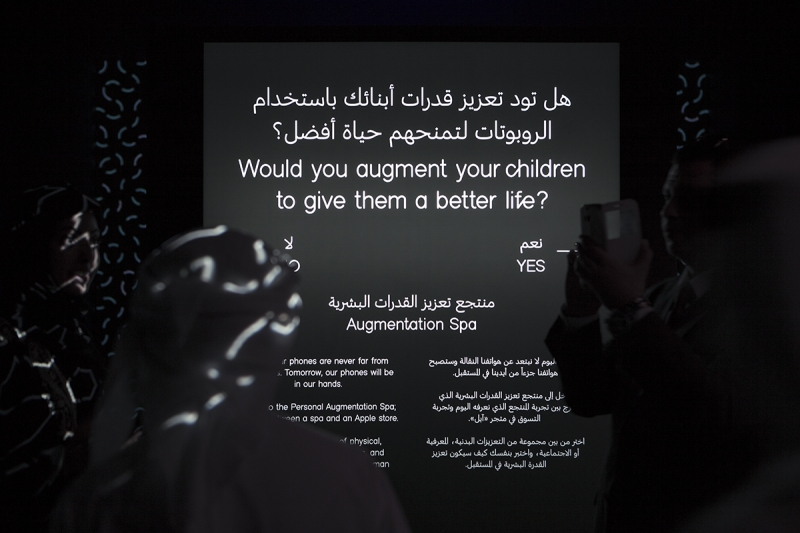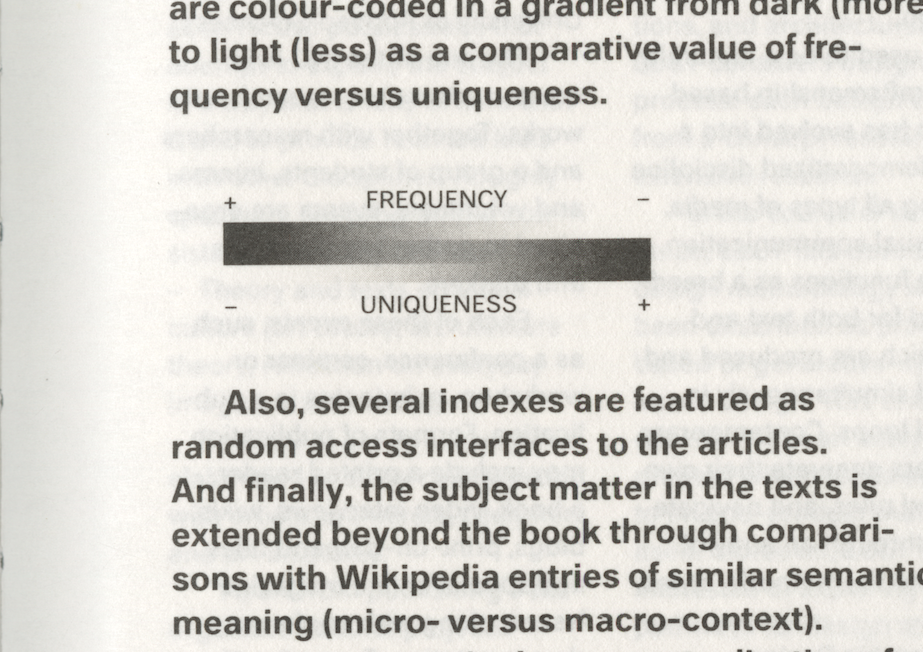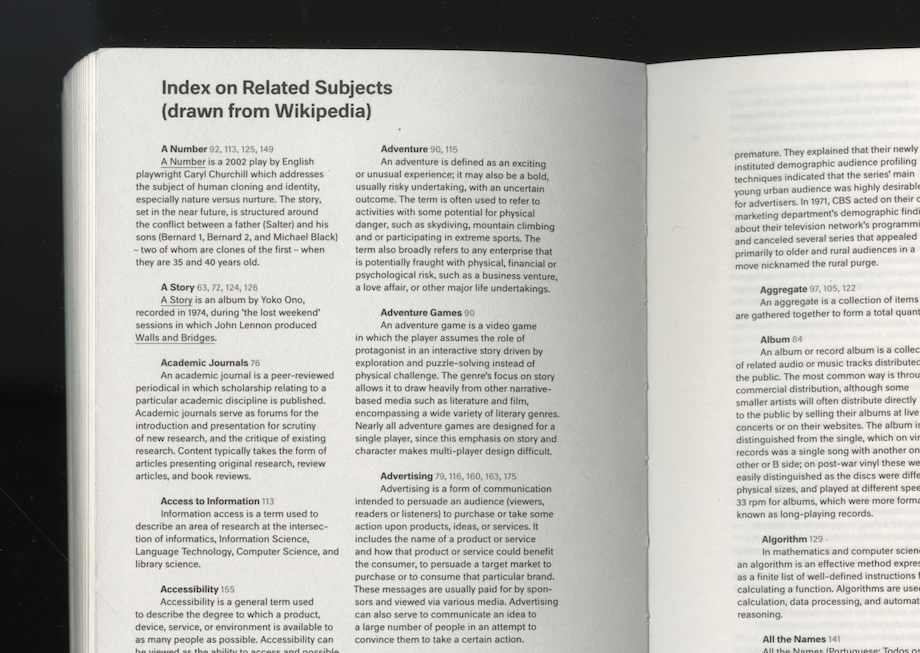A few days ago, I went to The Hague to talk with Thomas Castro –one of the designers of LUST– about I Read Where I Am which is one of the editorial projects of the studio. We also discussed more broadly about the publishing industry and nowadays experimental process of publishing.
LUST is a multidisciplinary design studio based in The Hague, established in 1996 by Jeroen Barendse, Thomas Castro, and Dimitri Nieuwenhuizen. LUST works in various fields such as graphic and editorial design, visual identity, web design, installation and performance. Since 1996, LUST has grown up and now counts a dozen of members. With the creation of LUSTLab, which consists in a branch of the studio where creative coders and programmers develop the interactive part of the projects, six years ago LUST has increased its workforce. LUST handles now the conception of considerable interactive projects ; they recently created a dynamic identity for the Museum of the Future (at the World Government Summit) (Fig.A), and are now developing a lighting system for road infrastructure (tunnel).
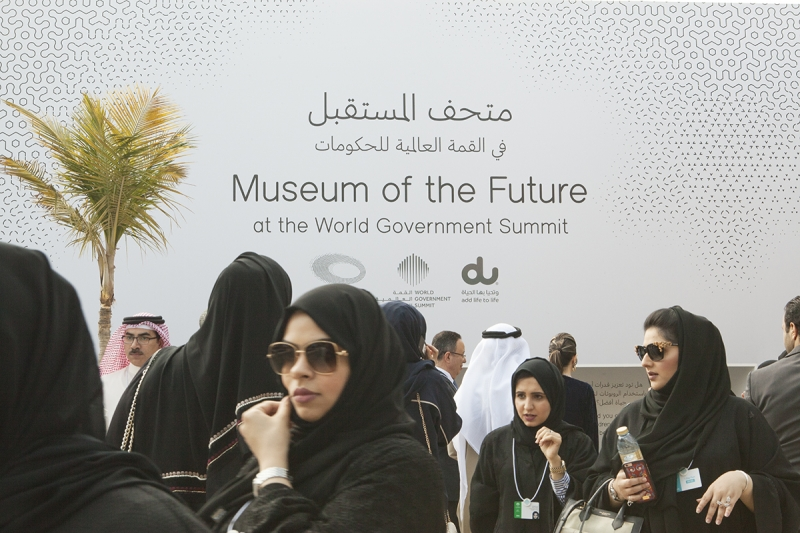
Next to this, LUST also produces books and editorial design, but with a computational and hybrid approach. I Read Where I Am (Fig.B) is a collection of 82 essays written by 82 different writers. The book focuses on the future of reading in the digital area. The book was edited by Mieke Gerritzen, Geert Lovink, and Minke Kampman and published by Valiz in 2011. The design of the book was made by LUST.
Here is a glimpse into some of the ideas discussed together.
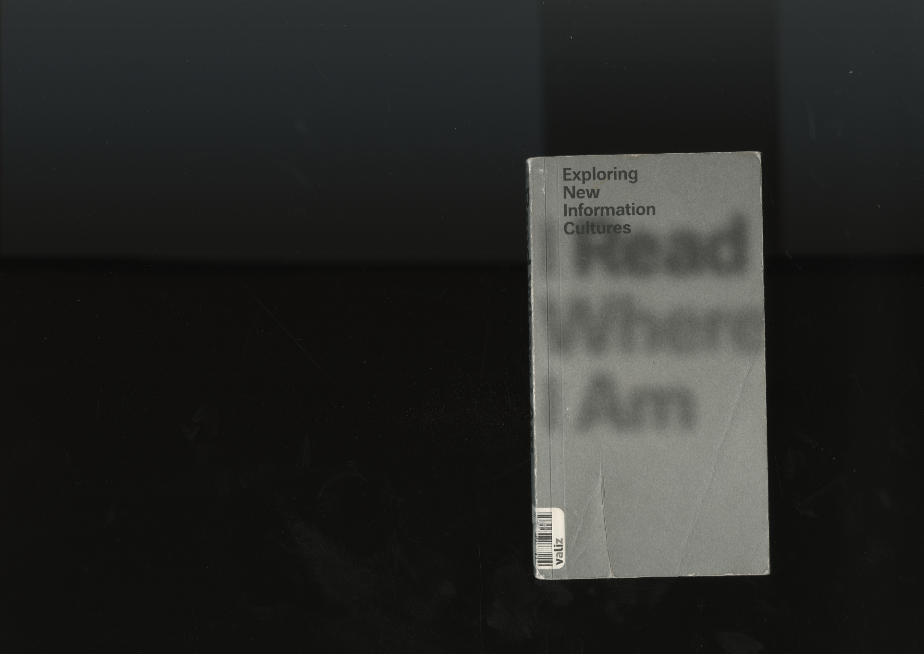
Fig.B
Subject before shape
LUST could be characterized by their specific approach to the topics. Even if they produce visual content as an output and if they are usually called graphic designers, their main work isn’t about looking for unrivaled aesthetics and make visual demonstration but rather lies in a deep analysis of the content, as an input.
Their work is all about finding the more adequate answer to a problem by focusing on understanding the problem itself, instead of already having a pre-conceived notion of the form in mind and try to apply it to a project. It is even more significant in our era, since we are witnessing the globalization of the graphic design production, which one of the obvious reasons could be the gigantic amount of documentation online which never ends growing and tends to erase little by little local specificities. (Behance, Pinterest, Tumblr, Instagram, but also websites for visual trends as trendlist.org). Castro thus confessed:
“I don’t believe anymore in: ‘you have to re invent yourself for every new project’, before it was possible but now it’s not possible anymore, everything has been done.”
Indeed, at LUST, it is not really about trying to re-define its visual identity every time, but more about defining a problem and designing its solutions, and finally ending up with considering this as your distinctiveness. It doesn’t mean that there is no place for experiments though. LUST tries as much as possible to conduce experimental projects, by researching in a rather heuristic approach: you don’t know in advance what you’ll get, you just try by focusing on what is given in the brief.
The reading, the horse, and the carriage
To design I Read Where I Am, LUST focused on linguistics. They found some interesting details as the use of ‘unexpected’ expressions in the essays. For instance the use of ‘Horse and Carriage’ in the sentence: ‘It is a losing game if you consider a book to be the horse and carriage of the information economy, to be preserved because it is slow, heavy, and expensive.’ (extract from Content Economies, by Daniel van der Velden). Out of the context of the sentence, this expression would appear quite bizarre. What is this word doing in something about digital reading? Those weird disparities between the thematics (reading), the expected content (lexical field of reading) and the content itself (horse and carriage) were the point of departure of the project.
This accidental finding which wasn’t envisaged ‘a priori’ leaded them to go deeper in the analysis by producing some various simple algorithms to analyze the text. They produced a script to get the frequency of words, from the most used (book, word, reading, text) to the least used (horse, carriage…) in order to get a heat-map, a large spectrum of the book. (Fig.C)
To go deeper with what Castro said, we could consider the most frequent words as the words that people see as the most useful, if we refer to the notions of ‘use’ and ‘consumption’ of the book as a product. To my mind, when you add metadata in a file or tag a publication on a web platform with a selection of 10 keywords, it consists in finding a balance between what you want to highlight from the book, and what you wish people to focus on in your book. By summing up a huge text in a few keywords you orient the way your reader should read it. Whatever you will find the most important in a text, your choice will be oriented by your own and subjective cultural background. Of course in some cases your audience can share the same background and interests but it may happen that some people won’t.
With I Read Where I Am, LUST aimed to give new reading paths. We could even say that they re-wrote the book, since it can be read in various ways. But they did without changing its content, only by adding different index and cross-references to the texts. By presenting the least used words of texts, the book creates unusual entries and leads to unexpected findings, and challenges the traditional tables of contents. The least used words are kind of anti-heroes.
Computed data and digital anthropology
From those ideas and researches and as explained before, LUST created a first script in order to scan all manuscript’s content. The script browses all the texts, keeps all the small words away (and, I, the…) and keeps the nouns and verbs (read, horse, carriage…). This script helped them to elaborate the index based on word’s frequency. (Fig.D)
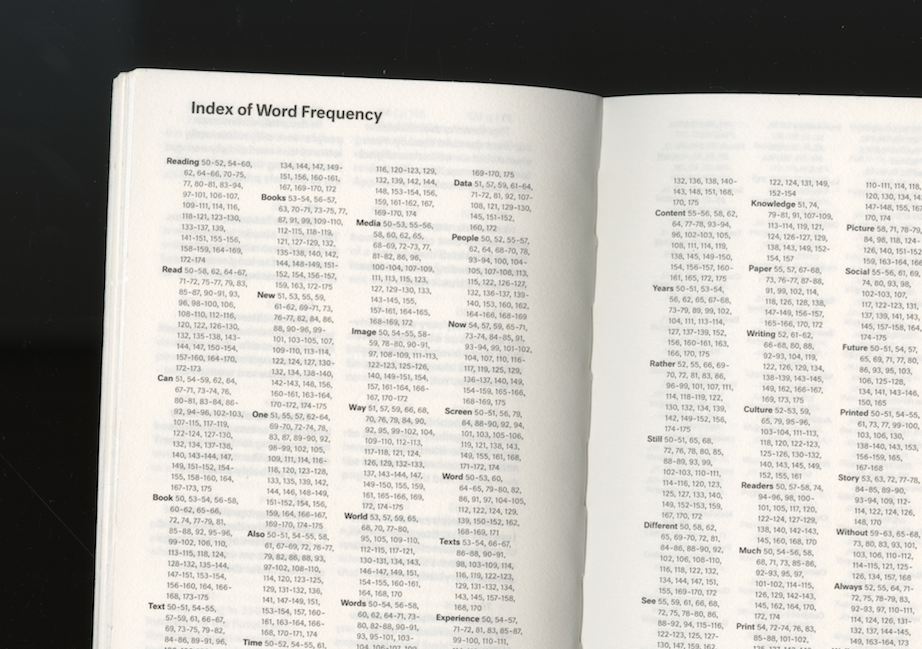
Fig.D
But then, they kept on researching on algorithms, which were based on readers/users habits and which could preempt their needs.
What if people have no time enough to read? For this, they created another index of the texts, showing the 140 first characters of each essay (Fig.E) inspired by the format of tweets in Twitter. So that people can just read the beginning of the texts and see if the text will interest them in a matter of content but also of writing and style. It stands as a mini abstract for each text.
Moreover, LUST added an approximate time of reading (Fig.F) for each essay, calculated on the number of words.
Those features really emphasize the main purpose of the book: you read where you are. I Read Where I Am deals with mobility, it is meant as a transportable book, almost a smartphone.
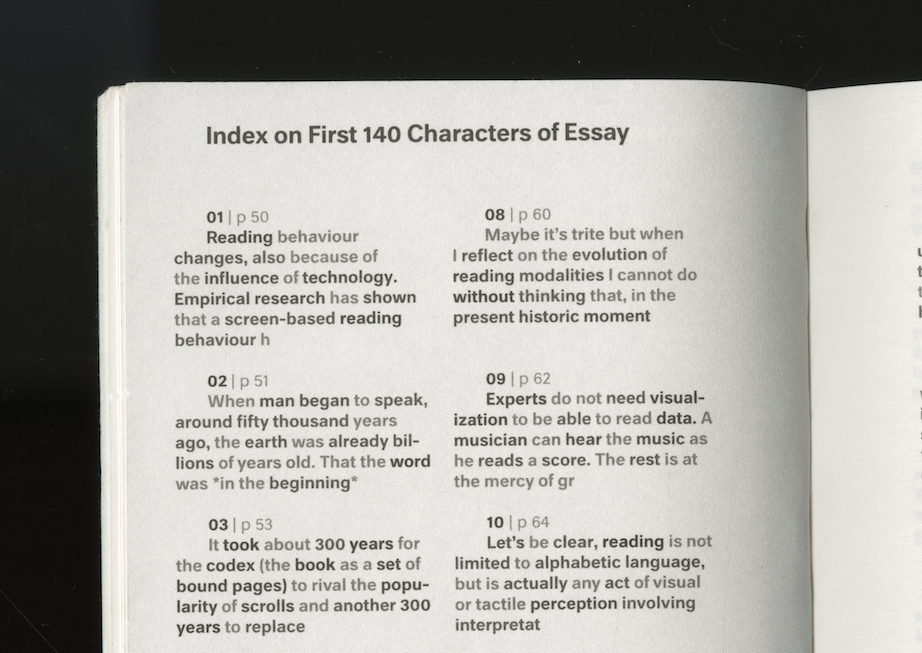
Fig.E
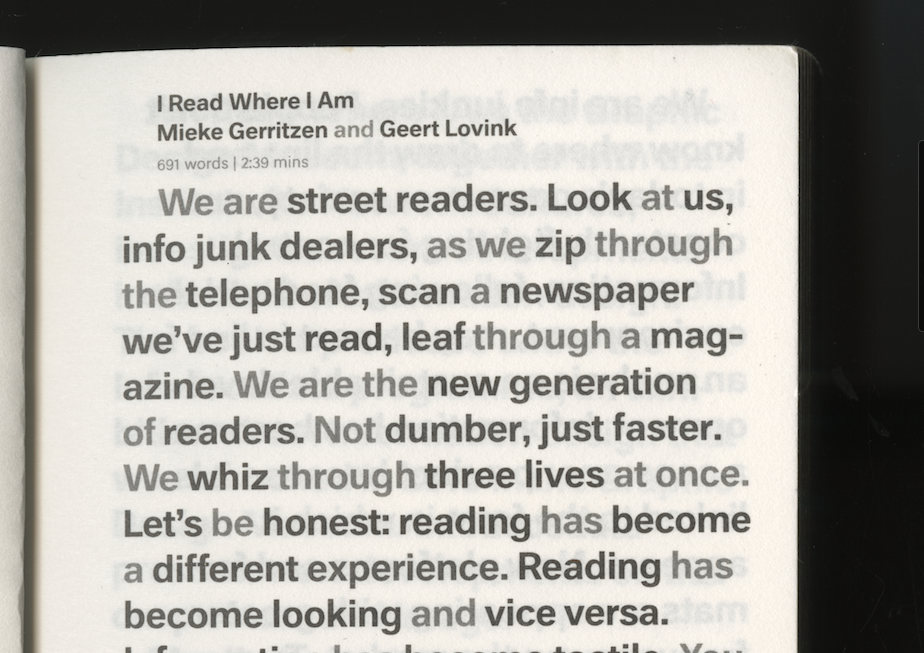
Fig.F
What if people want to go further in the reading and discover related articles and notions? For that, they made a list showing the related subjects to a word, based on Wikipedia’s articles. (Fig.G) This list consists in a kind of glossary of terms. They created a script in order to send a request to Wikipedia’s with its API [1] with a word or a combination of words (‘Horse and Carriage’) and when matching a result, it would save the content of the page (https://en.wikipedia.org/wiki/Horse_and_carriage) offline.
This attempt to anticipate what people will browse online while reading can refer to what William Gibson means when he says:
“Some readers search everything with Google. I am totally aware about everything I write in my books, but also that readers may find my paths.”[2]
LUST basically ended up with creating a tool for the book. It was based on PHP.[3] The different scripts were launched at different levels of the process.
The design of the book was also partly computed with a script which scans the whole content of the book (including the tables, the introduction etc) and gives a different shade of gray to each word.
The most frequent words were the darkest ones, and the least the lightest.
The different styles were added to each word in PHP and then were exported in an ICML document which could be imported in an InDesign file directly with the different headings applied to the content. Then, they designed the font style and the general layout by changing the settings of each Characters Styles in InDesign.
When asked about the choice of using InDesign as a software to make the layout of the book, instead of directly exporting a PDF from a tool with command lines as instance, Castro invoked the convenience that the Computer Aided Design (CAD) softwares offer when it comes to edit a long text already laid out. It was the fastest way to produce it within the context of a huge book gathering more than 80 different writers, and of course as much as potential edits.
Influence of web/Hypertext
Because of the research I currently conduct, I wanted to know a bit more about the influence of Internet and the web in their process.
It appears obvious that LUST was strongly influenced by the practice of web when they created this book. Castro confessed that they deliberately knew in advance that they wanted to experiment on the topics of reading and digital matters, but didn’t find neither time nor any context before. They were thus waiting for a proposal. But more broadly, in its general practice LUST is influenced by new media, new technologies, and digital. I Read Where I Am is a good illustration to show how much LUST’s practice is characterized by a strong ‘intermedialité’. For Castro:
“Technology is changing, the points of view of the users are changing… and we try to see what we can do with those things.”
Castro agrees with the idea that I Read Where I Am can be considered as a hypertext. Indeed, if we look back at the definition proposed by N. Katherine Hayles, the hypertext isn’t especially a sort of text embedded in digital media only, but is every text which offers rich connection and interaction with its content, as an encyclopedia would.
“Hypertext, understood as a genre that can be implemented in both print and digital media, offers an ideal opportunity to explore the dynamic interaction between the artifactual characteristics and the interpretation that materiality embodies. Like all literature, hypertext has a body (or rather many bodies), and the rich connections between its physical properties and the processes that constitute it as something to be read make up together that elusive object we call a ‘text’—and that I want now to call instead a codex book or stitched pamphlet or CD-ROM or Web site.” [4]
LUST already worked on hyper textual books in the past, for instance with Margetink: Inventing a Different Marketing Language (by André Plateel, 2003), where a 75 page index shows all the words used in the text and creates cross-references in the 500 pages of the book. (Fig.E)
This project presents some similarities to I Read Where I Am. Since LUST is also a team of programmers, every line of code and script they write is often re-used in another project some years after.

Alternative publishing process in digital era
LUST began to work on the book in 2011, when digital reading existed already but still wasn’t developed as it is today. I Read Where I Am makes thus reference, by its visual features, to a smartphone’s or tablet’s screen, because of its size, ratio, format, layout (1 column instead of 2, as a long scrolling page). At the time when I Read Where I Am was made, Twitter just got more accepted by people ; before, Twitter was considered as a strange network where people would just share what they were doing right at the moment (‘I am eating right now’) without considering any other kind of content. But people began at this moment to see the potential of Twitter as a unique and powerful tool of communication.
At the beginning of the project, when the texts were presented to LUST, the studio insisted on the fact that they wanted to make an entire project, raising the idea that if we deal with digital reading in a book, this book shouldn’t be only available as a printed book, but should exist through different media. Then, a long dialog with Valiz (the publishers) began, in order to find an agreement.
LUST made many different proposals. They proposed for instance to make the book available on the web. It implied for the book to be licensed as Open-Source, since they share the idea that you can’t publish something online and not expect it to be copied, but this lead to problems of copyrights (especially since they were 82 different writers). Sharing is Caring! Another idea was to make some of the printed copies available for free, by insert pages of advertisement inside the books, which would finance the costs of the book.
They also imagined an online platform, where people could participate in the writing and commenting the texts. They finally achieved this idea. Every word works as a link. By clicking it, you can add a sub branch and write whatever you want as a comment of the text to enrich it and create as branches as you want. This version of the book has been existing online from the launch of the book and people actually used it. Unfortunately, the platform wasn’t this stable and is now a bit buggy (non up-to-date Javascript versions, move of the server’s location). Moreover, there is currently no budget enough to keep it updated.
[1] In computer programming, an application programming interface (API) is a set of routines, protocols, and tools for building software and applications.
[2] William Gibson, interview by Anne Laforet for Pop Tronics, 25th of March 2008, http://bit. ly/1LMAseF
[3] Server-side scripting language designed for web development but also used as a general-purpose programming language, often used for database.
[4] N. Katherine Hayles, “Print Is Flat, Code Is Deep: The Importance of Media-Specific Analysis”, in Pœtics Today, 25.1, 2004, p.67-90.



